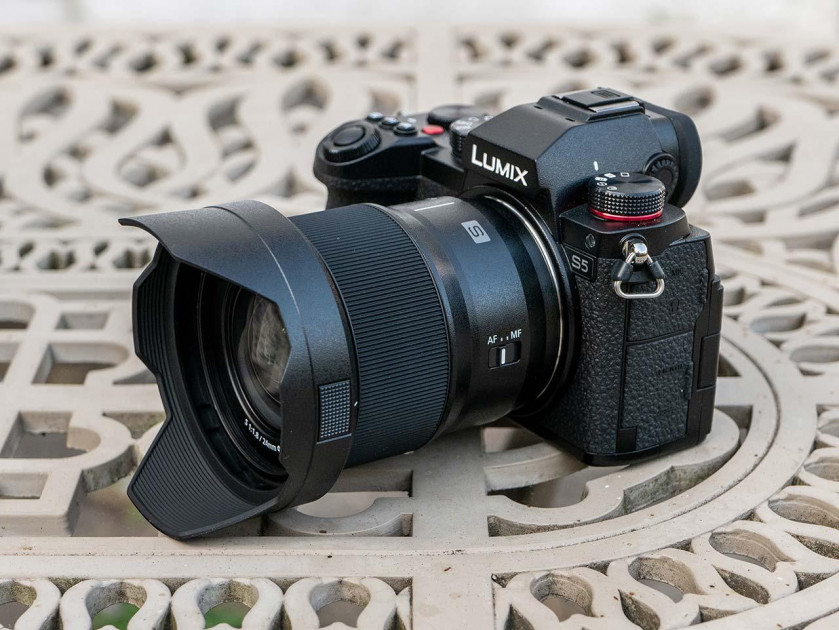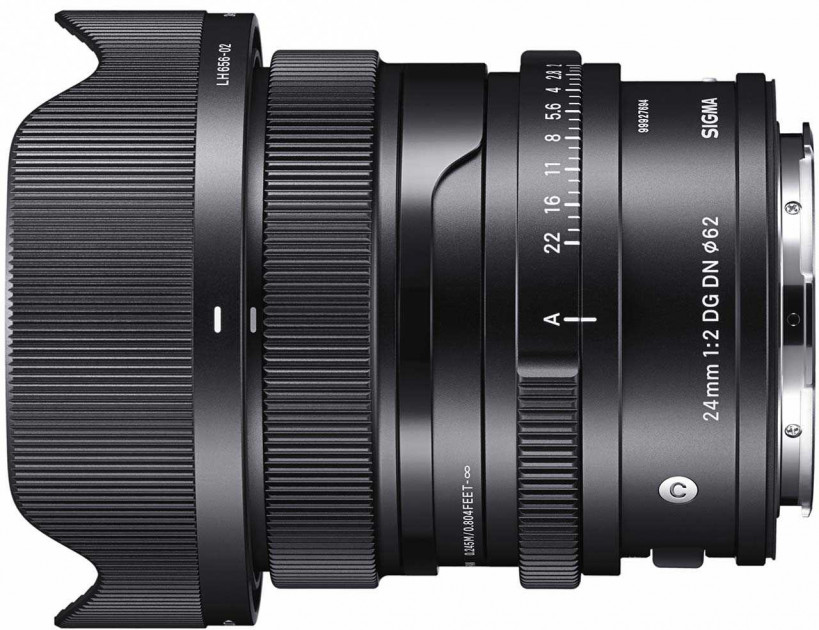Go behind the lens of the Leica SL2 and SL2-S with cinematographer Bret Curry (@bretcurry) as he shares the influences, inspirations, and muses behind his visual journey with filmmaker and photographer, Nicholas Kalikow.
“Bret Curry and I met in late 2018 and immediately found we shared a very similar set of influences and philosophies regarding cinema and photography. We quickly discovered that we were both drawn to Leica to create our visual stories, and have been collaborating on various projects shot on Leica cameras and lenses ever since. When the SL2-S came out I was absolutely smitten, Bret told me that if I wanted to buy the SL2-S, he’d happily take the SL2 off my hands. We took a few minutes before shooting our “NEBULA” project to talk cameras.” – Nicholas Kalikow
Nicholas: You were known as the Q photographer, what has SL2 given you that Q could not?
Bret: I shot with my original Q daily for over 5 years. In my opinion, there is no more perfectly designed camera, particularly for someone like me who feels most at home shooting a 28mm and considers a 50mm to be telephoto. Most of the time – and this is what I recommend to people – I shoot the Q spot AF, auto ISO capped at 1600, and at f1.7 (unless I need to stop down for some creative purpose). Obviously, there are a hundred different ways you could shoot with the Q but this is my favorite. With the Leica Q, the level of quality you get in relation to the low amount of effort spoils you.
I did however desire the versatility of the SL2 system, especially as my work has evolved to 50/50 film and motion. I was especially sold on switching once I used the APO Summicron SL lenses. That being said, the daily lens I keep on my SL2 is a 28mm Summilux-M – so I basically put together an interchangeable lens Q for myself. Some habits die hard.
Nicholas: Tell me about how you use the SL2 and SL2-S for motion work and how you build out the camera to fit comfortably on a film set.
Bret: The first thing I have to mention is how purposefully designed the SL2 and SL2-S are for someone who shoots both stills and motion work on the same project. You can switch between the stills and video mode through the quick menu screen and their individual settings are maintained. That is huge, particularly when you most often want a 180-degree shutter, consistent ISO, and color temp while shooting motion.
The great thing about the SL2 and SL2-S is that you can treat them the way you treat any other high-end digital cinema camera – essentially as a sturdy box with a sensor, lens mount, and a few intuitive buttons that blend into the background and melds seamlessly with industry-standard camera accessories. I utilize the Lock Circle Full Metal Jacket 2 cage to surround the camera with mounting points and a rod system and build out the camera the same way I would with any other cinema camera. I output a very malleable log image to the Atomos Ninja V recording monitor, although in-body recording also gets you a fantastic quality. The camera, monitor, and wireless accessories are all powered by one battery mounted at the end of the rod system. Pressing the record button on the camera triggers recording to the monitor as well. Everything you would expect out of a typical cinema camera – and certainly much more straightforward than most DSLR-based rigs I’ve used in the past.
Nicholas: What considerations do you make when choosing the SL2 vs. the SL2-S for a given project?
Bret: The natural decision, if you have the option, is to shoot the SL2 for stills and the SL2-S for motion. I think that applies most of the time, although the SL2-S excels in uncontrolled low-light scenarios and the SL2 shines in lit or controlled environments. There is a reason for both cameras to exist side-by-side, but you would be well served by either in almost any situation. The Venn diagram of these two bodies would show many more similarities than differences.
Nicholas: When I first shot with you and your wife Joy, I realized that she’s more than your muse and favorite subject, she seems to almost be a collaborator, can you talk about how you guys work together?
Bret: Joy has been beside me while I’ve had a camera in my hand more than anyone else, except maybe my friend and main camera assistant Justin Scheidt. I can’t begin to explain how much she has influenced every part of my approach to photography, and to life in general. She brings perspectives and ideas that are completely separate from my instincts, and as someone with a B.A. in Art History, she has a certain visual literacy that can often help me with problems I am stuck on. She is also completely uninterested in the technical side of photography, which is refreshing since I am surrounded daily by people like me who can’t stop talking about the technical side of things.
Nicholas: Your first book, A Ghost Story: Photographs was recently released this month by Temper Books. All of the images in the book were shot on the Q, correct? Can you tell me a little more about that project and how it feels to be a published photographer?
Bret: All the images in the book were shot with the Q with the exception of a few shot on another camera. I was the gaffer and second-unit DP on the film A Ghost Story, which was directed by David Lowery and came out 2017. The making of the film was a truly unique situation. A group of Texas filmmakers and some other close collaborators who had been working together on various projects for the past decade got together to make a small movie with some very recognizable actors, one of whom was in a classic bedsheet ghost costume for most of the film. It’s not a situation that comes up often! The Q is the perfect camera for someone taking photos on set on top of their main job. I was able to capture stills that took advantage of the striking visuals of the film and the intimate nature of the set. After a long but enjoyable process, the book will be released via Temper Books. It’s a pretty special thing to have a book published and I am looking forward to the fans of the film and its imagery finally having the opportunity to own a copy.
Nicholas: Getting back to the SL2 system, the Summilux-M 28mm as you’ve stated is your “go-to” lens, but on our collaborations, you very often use the Summicron-SL 28mm, and you’ve had a long history of shooting 28mm on Leica Q. What qualities do each of these lenses bring to the table for you?
Bret: To me there is nothing better than a fast, sharp 28mm lens on a full-frame sensor. It really is the sweet spot: You get context but separation. Also, when you are shooting people, you often have to get in their “bubble” to achieve the framing that you desire. You end up sharing a space with each other separate from everything else around you – there can be a sense of conspiring with your subject. It sounds weird to say, but it’s a dynamic that translates to the feeling of the image.
Each of the lenses you mentioned have unique qualities. I have mentioned to you before that the 28 Summilux-M feels has a different character than the APO-SL and Q versions, I think it’s the most classically “Leica” of the bunch, it’s difficult to describe. The APO-Summicron-SL series in general is just mind-blowing in terms of quality, particularly when the images are closely inspected. However, 28 Summicron still retains that characteristic Leica falloff. The 28 Summilux on the Leica Q is a marvel, and I assume as a closed system it is tuned to the sensor and vice-versa to achieve optimal quality, particularly wide open. The macro mode with that lens is also a really impressive achievement of mechanical design. Leica and their 28mm’s remind me of a band who changes their sound drastically with each album, but are still immediately recognizable as them if that makes sense.
Nick: When you shoot film you seem to vary evenly between color and B&W, but in digital, you almost exclusively shoot in color? Is there a reason for that?
Bret: Regardless of format, I love bold colors and a sense of heightened reality, and that is why I mostly seem to shoot and deliver images in color. I think it’s also a function of viewing in color while shooting digital and not being able to unsee those images in color. My film cameras are now almost always to capture “bonus” images on a project that is being shot on digital, so I’ll often put black and white in to mix things up. I would love to make a point to shoot more purposefully in black and white on digital in the future, my next Leica might very well be a Q2 Monochrom or M10.
Nicholas: Do you ever watch films and say, “I wonder if I can recreate that as a still?”
Bret: That is a great question. All the time. I can in particular think of a recent shot that I did of Joy that was directly influenced by Mulholland Drive, where a shot of palm trees dissolves into a shot of Naomi Watts lying on a couch. The blend between those two shots by DP Peter Deming made an iconic double exposure that we wanted to recreate. It was fun to share the resulting image and see how many people made the connection.
Nicholas: Spielberg or Hitchcock?
Bret: Kubrick!
Nicholas: What’s next for you?
Bret: Well I’ve got to get SL2 in this underwater housing and you’ve better get your wetsuit on, NEBULA ain’t gonna shoot itself!
Nicholas: Let’s do it!
Take a sneak peek of Bret’s most recent adventure with Nicholas.
View Bret Curry’s Set Up
To view more of Bret Curry’s work visit his website, or follow him on Instagram at @bretcurry.
Check out Nicholas Kalikow’s work on his Instagram at @nicholas_kalikow.













